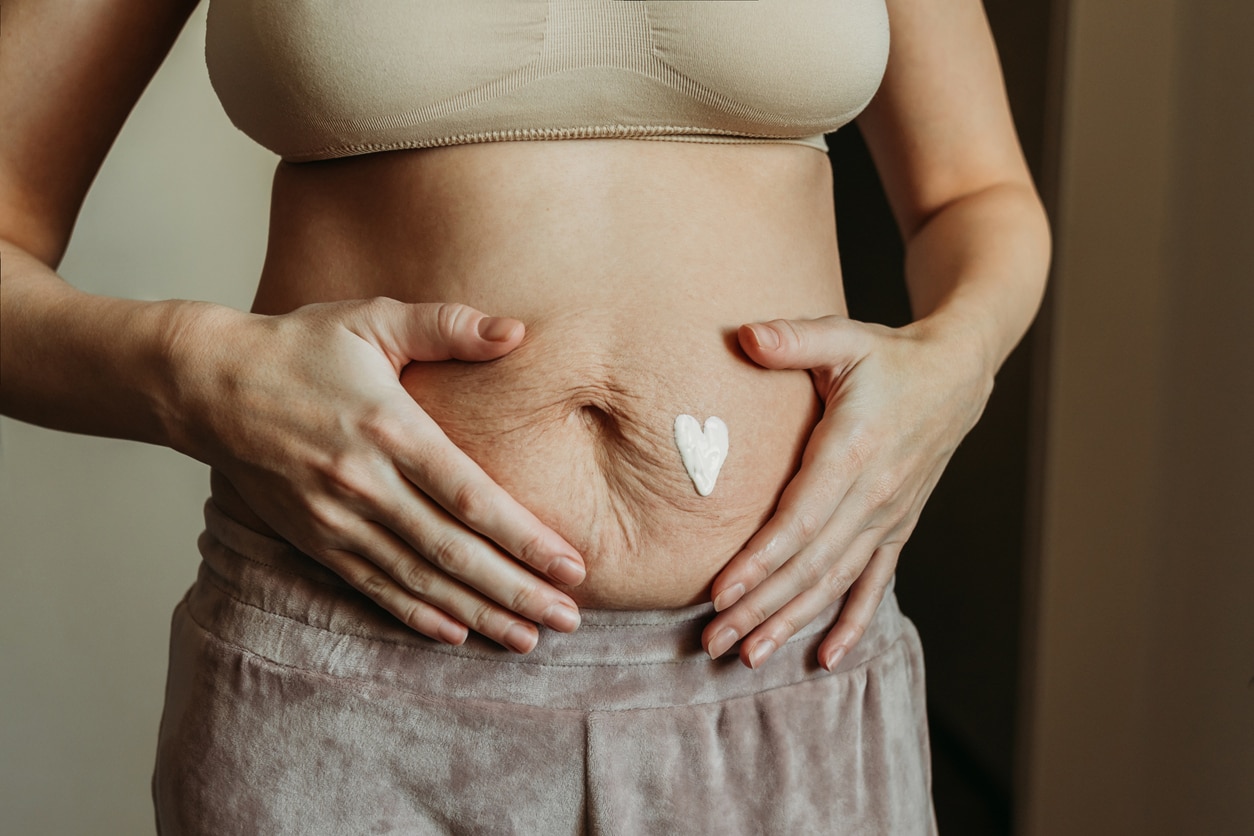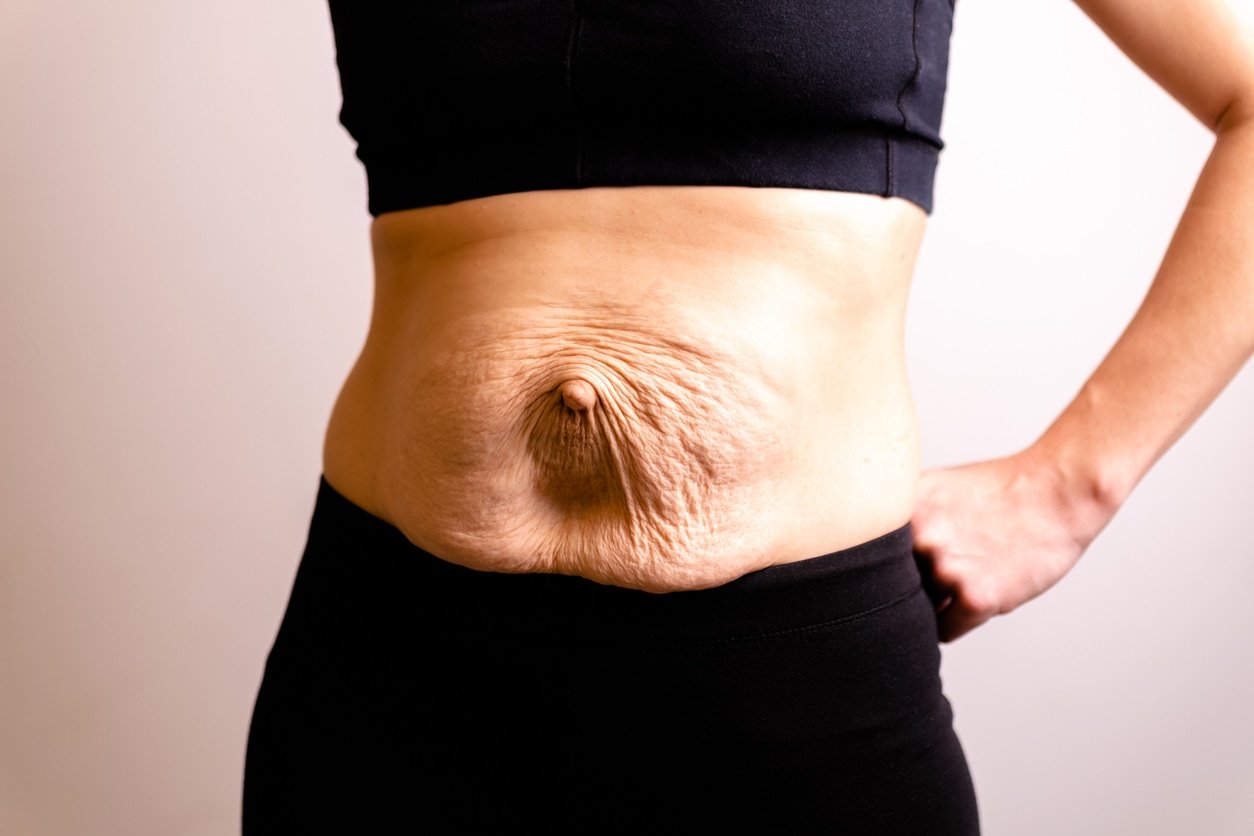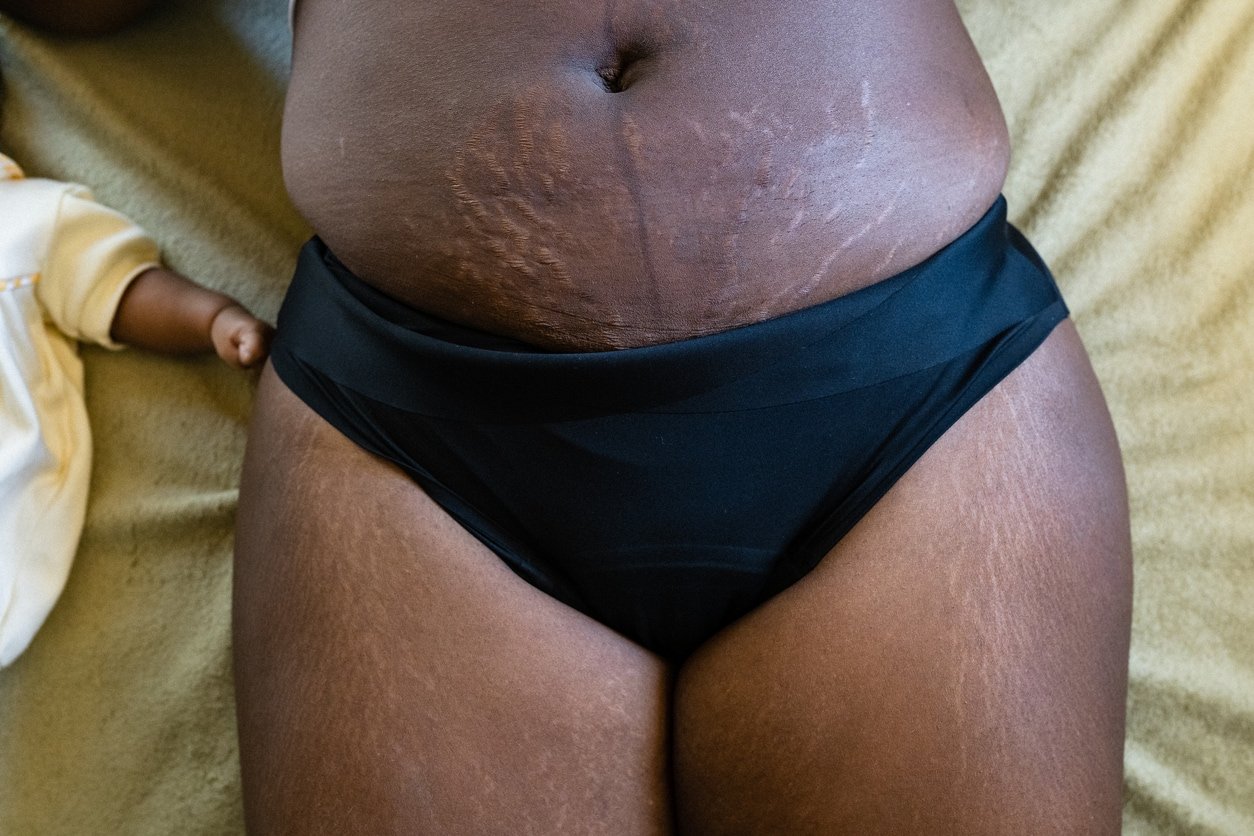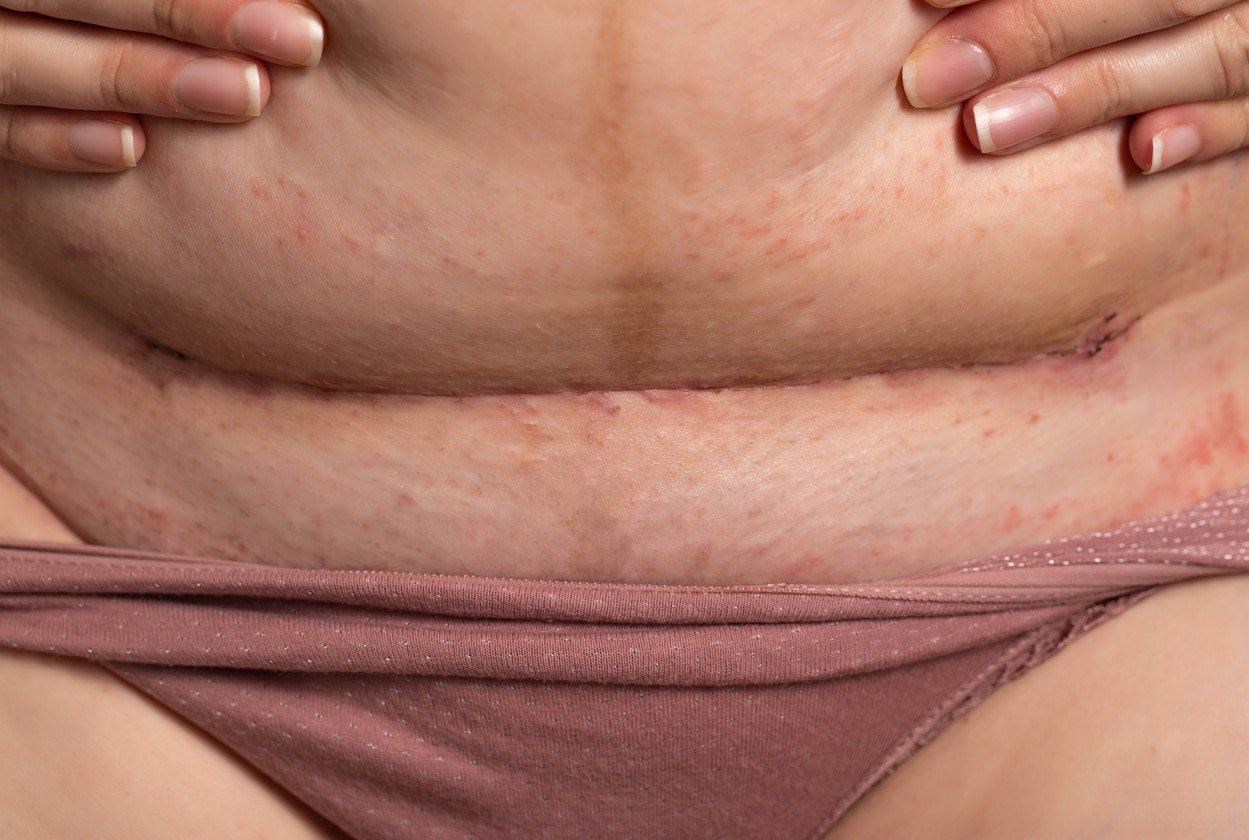
![]()

Pregnancy, labor, and delivery can be the most grueling and physically challenging experiences of a woman’s life. We’re stretched, poked, prodded, ripped apart, cut open, and sewn or stapled back together. So, we should expect our bodies — specifically our post-pregnancy tummy—to bear the brunt of all those 9 ½ months entail. We should expect them to be swollen after birthing a baby, sore, and covered with stretch marks, scars, and loose skin.
Yet, just as society expects women to mother as if they don’t have careers, we are also expected to give birth as if we were never pregnant. We’re expected to “bounce back” and quickly look like we did before we began the arduous (and miraculous) experience of bringing a new human into the world. It’s absurd, and it’s time we face the facts of what a post-pregnancy tummy really looks like.
Truths About Your Post-Pregnancy Tummy
Here are several truths about what a post-pregnancy tummy really looks like.
1. You Still Look Pregnant
One of the most toxic lies fed to women is that they’ll push out a baby, and poof! Their tummies will immediately be flat again, and they’ll leave the hospital in skinny jeans. The reality is that most of us still look pregnant for days, weeks, even. We leave the hospital in maternity pants or sweats (and live in them for a while). And yes, we still look a few months pregnant as we begin caring for the baby we’ve brought into the world.1
And although there still are those celebrities who unrealistically show off flat tummies and a magical return to their pre-baby body within five minutes of birth, thankfully, more celebs are normalizing the post-baby belly today. Even Kate Middleton—the queen of flawlessness and perfection—stood on those hospital steps holding her babies and proudly showed her stomach, which wasn’t flat.

2. You May Have Symptoms of Diastasis Recti
Any woman who has grown a whole human inside of her knows how much our bodies stretch to accommodate that growing baby. And all that stretching means our stomach muscles must grow, move, and often separate. This gap in the front of the stomach — a result of the abdominal muscles separating — is quite common in pregnancy, and it’s called diastasis recti.1
Diastasis recti affects 60% of pregnant people and usually resolves itself within eight weeks of delivery. However, up to 40% of women with diastasis recti postpartum still show symptoms six months after giving birth. Symptoms include (but are not limited to):2
- A visible bulge or “pooch” that protrudes just above or below the belly button.
- Softness or jelly-like feeling around your belly button.
- Coning or doming when you contract your ab muscles.
- Difficulty lifting objects, walking, or performing everyday tasks.
- Feeling weak in your abdominals.

The good news is if your diastasis recti isn’t healing on its own, there are exercises you can do with the help of a physical therapist. Surgery to repair the stomach muscle separation is also an option but is very rare.2
3. Stretch Marks Cover Your Belly
These are sometimes affectionately called “tiger stripes.” If you’ve found that your stomach is covered in oddly-patterned lines, you’re not alone — women in every corner of the world get them. Stretch marks can result from abrupt bodily changes like drastic weight gain, bodybuilding, or rapid growth during puberty. But they are commonly associated with pregnancy, as our bellies grow so much so fast, and the collagen and elastin in our skin cannot keep up.3

However, the good news is that stretch marks usually fade after pregnancy. The color fades, and the narrow bands sink beneath your skin. If you run your finger over a mature stretch mark, you often feel a slight depression, according to the American Academy of Dermatology. If you want to help your stretch marks fade faster, you can try oils, gels, and lotions, although none of these methods is a sure thing. The AAD says your best bet is to start applying the product early — when stretch marks first appear — and massage the product into the skin. Other methods of minimizing stretch marks include chemical peels, laser therapy, microdermabrasion, radiofrequency, and ultrasound.4
4. The Linea Nigra Is Still There

If a strange dark line appears on your belly between your navel and pubic bone, don’t worry. It’s normal, and it’s called the linea nigra. It’s the dark line that develops across your belly during pregnancy. The line may have previously been there; however, it went unnoticed because it was so light in color.5
So now you’ve had your baby, but the line is still there. You might look at it affectionately, as it symbolizes what your amazing body just did. Or you’re desperate for it to fade — and it will with time. Since the “pregnancy line” is caused by hormone fluctuations, as your body regulates those hormones postpartum, the linea nigra will eventually disappear.6
5. Your Belly Skin Is Loose and Wrinkly
Because of the drastic stretching our belly does in pregnancy, the stomach skin is often very loose after we’ve given birth to the baby. Because the skin is made of collagen and elastin, it can stretch and expand but often struggles to retain its original form. Eating healthy fats and proteins, exercising, drinking lots of water, and trying skin-firming products that include vitamin C, collagen, and retinoids might help firm up that wrinkly skin.7
But know that it happens to women everywhere. Even super fit women like fitness blogger Anna Strode — despite having a legit six-pack after having twins — have loose belly skin. The proud mama shared this IG snap of her stomach, adding, “Be proud, be kind, love your body for what it has done. Stretch marks, loose skin, bellies, and saggy boobs — embrace it mummas because you are BEAUTIFUL.”
6. You Have C-Section Scars
Like other surgery scars, your C-section “battle scar” is here to stay, even if it fades over time. But that scar sure is something to honor and be proud of! It’s a symbol of you growing a whole person inside your womb. Modern medicine has improved the C-section procedure so much that unless you have an emergency C-section with complications resulting in a larger vertical cut, usually the scar is small and below the bikini line. Either way, that scar is there. Also, having major abdominal surgery can make rehabbing your stomach muscles and tightening your tummy skin hard, so try to be patient and appreciate all your strong body has accomplished.

Make sure to listen to your doctor and take care of yourself. You’ll have stitches or staples to be careful with and be on pain meds. Your recovery might look different from someone who had a vaginal birth. But all that matters is that Mom and her baby are healthy. The healing will come.
If you plan to waltz out of the hospital three days postpartum with a flat tummy, wearing your fave jeans and a crop top, let me stop you right there. You’re likely going home in maternity pants or loose-fitting sweats. You’re also not walking out of there in regular anything below the waist. Embrace the mesh undies and realize they don’t go with anything but baggy and comfy bottoms. You also might still look and feel pregnant with scars, stretch marks, staples, and stitches. While you might be in pain, exhausted, and feeling like you’ve been ripped apart from the insides and then run over by a truck, you should also look down at your beautiful post-pregnancy tummy and feel proud. You did it.
